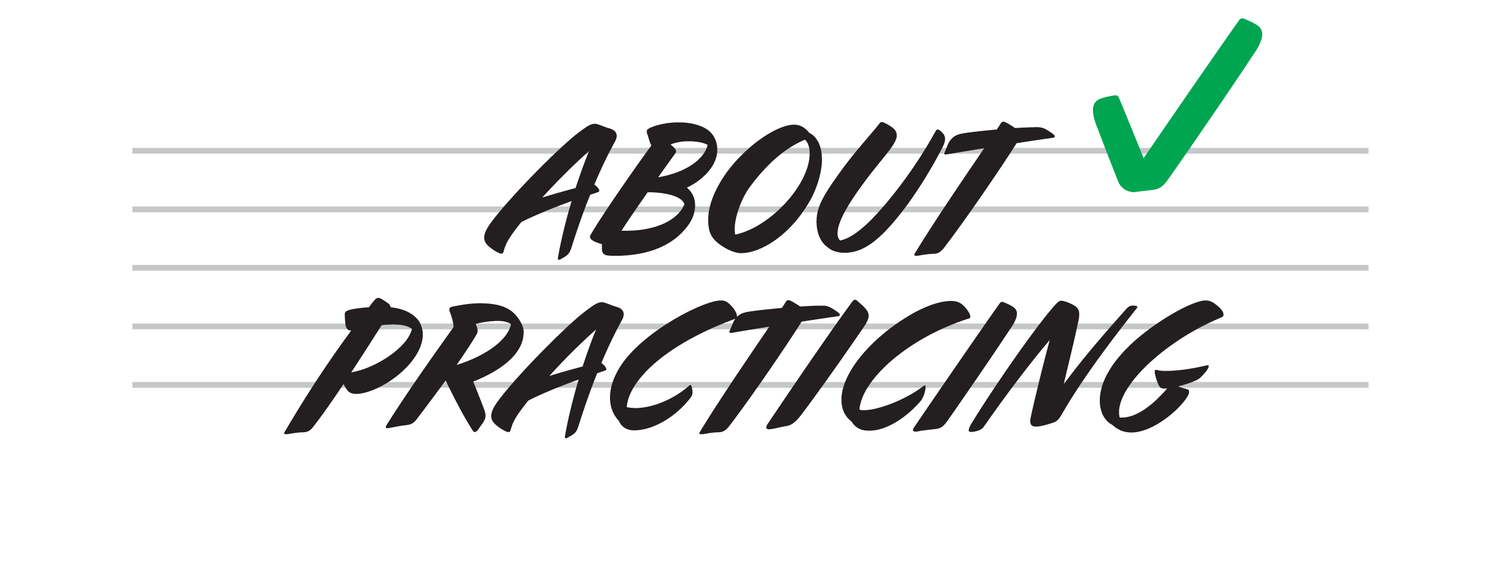Finding joy in practicing
Good practicing is enjoyable and effective. Enjoyable means you can find joy in it. If you're going to enjoy your practicing – and for me that's essential – you have to keep an eye out for what lights you up.
1.
One thing that lights me up, and probably everyone else, is getting better. But my improvement is not always obvious. It happens slowly and in small steps, with plenty of plateaus and setbacks. There are breakthroughs too, of course. But usually I can't tell if I'm better at something today than I was yesterday. It takes weeks or months for a long-lasting improvement to become clear.
That's why I record myself once a month. I can compare myself playing the same thing today and a month ago. It's easier to hear my progress, and find some joy, over a stretch of time.
2.
I get a lot of pleasure from savoring the way my hands move when I get something right. So much of practicing is repetition of motion. When you get it right, it feels good. There's joy in doing it over and over, not just to get better at it, but to feel how it feels.
I think this is part of the reason people like to practice while they watch television. For me, at least, TV seems to take over the verbal and visual parts of my mind. That leaves no room to think about what I'm playing or to look at my hands. But there's no competition for the tactile and kinetic mental real estate, so my awareness of how my hands move can fill it up. Somehow this works.
Also, the part of my mind that gets (1) critical and (2) bored with all that repetition is being kept busy by the TV, so it can't short-circuit the pleasure of all those good reps.
Speaking of savoring things, there's also the sound. Like feeling good motion, hearing good sound come out of my instrument is a sensual pleasure. It doesn't happen automatically, and it doesn't happen every time, so when I get it, I linger over it. I don't take it for granted, either. It's a source of joy, and pride, and pleasure.
3.
I recently convinced a friend of mine of the value of playing a piece of music in all twelve keys. (I've written more about this elsewhere.) Once he granted that it might be worth trying, I spent an hour or so of my practicing time writing up a step-by-step approach to doing it. I may be the only person I know who would find joy in that, but I did.
There were at least two things at work here. First, I was proud of the effort I've put in to this kind of practicing and eager to share what I have learned. So I was blowing my own horn, and helping a friend. There's joy in that.
Second, I got smarter, and there's joy in that, too. To write down this approach I had to take what I have been doing unconsciously, think about it, shape it into a simple system, and put it into words that were clear and interesting. As a result, I knew more about it what I was done than I did when I started.
4.
The joy I'm describing here has elements of sensual pleasure, pride, accomplishment, fulfillment and satisfaction. There's also a strong strain of identity - “I am the kind of person who does this well,” and “I'm doing what feels right for me.”
5.
Many of us first learned to practice by being forced to do it with little or no guidance. Often we expect to dislike it; we're in fact told by our culture that that's OK to dislike practicing. This idea is worse than worthless. The single best way to improve your practicing is to break free of it.
Expect to enjoy your practicing. Look actively for the joy - it's there. If you can't find it, change what you're doing until you can. Everything about your practicing will be better if you enjoy doing it.
